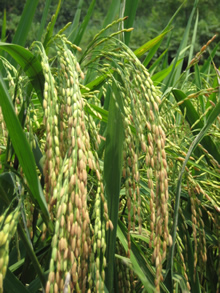Over the last decades, the rapid pace of globalisation has had a huge impact on agriculture, and on the livelihoods and lives of farmers, in many countries that had been self-reliant in food production. Globalisation has resulted in the industrialisation of agriculture, the vanishing of traditional farming culture and human-centred values, the destruction of nature, and environmental problems due to all kinds of pollution. The urban population has come to outnumber that of rural farming areas, and farming has slipped from many people’s awareness. Yet, rural and urban areas are interdependent. In recent years, because of their concern for food quality and health issues, and for sustaining food security beyond the availability of cheap fossil-fuels, urban dwellers have begun to understand the importance of and the value in preserving local traditional farming. They have realised that local traditional farming is the foundation for sustainable urban life.
The concept of Community Supported Agriculture (CSA) emerged in the West as early as the 1960s. Many successful cases have since proven its viability – so long as concrete local conditions are taken into consideration and appropriate adjustments are made. CSA can not only help to reduce the many problems arising from globalisation such as food miles (carbon footprint), pollution due to the use of chemical fertilizers and pesticides, and food security; it can also tackle the problem of vanishing biodiversity, partly a result of chemical- and industrial-based agriculture, and social problems arising from the migration of rural dwellers to urban centres.
What is Community Supported Agriculture?
The concept of CSA means that every person in a consumer community enters into a relationship of mutual support with the farmers in terms of the operation of the farm to enable it to become a farm of the community, both legally and spiritually, and to share in the risks and benefits of food production. This is in fact a cooperative form of small-scale economy based on fair relationship and mutual support between urban and rural dwellers and on the development of local production for local consumption.
Concept and Background
Community Supported Agriculture has been translated as either she qu wei ben nong ye (社區為本農業) or she qu xie li nong ye (社區協力農業) in Chinese. The concept can be traced to practices that emerged in Germany, Switzerland and Japan in the 1960s. At that time, consumers looking for safe food sources cooperated with farmers who wanted to have a stable customer base to build a cooperative economic relationship. Now CSA can be found all over the world, and the practice of CSA by grass-roots organisations in various countries and regions has resulted in diverse experiences. For more understanding about CSA, please read the following articles:
- "The Global Industrialised Food System" – A discussion on how globalisation has resulted in long-distance transportation, violation of consumers’ rights and interest and economic exploitation of farmers.
- "Defining Community Supported Agriculture" – A brief description on how CSA was introduced into the USA.
- http://en.wikipedia.org/wiki/Community-supported_agriculture










